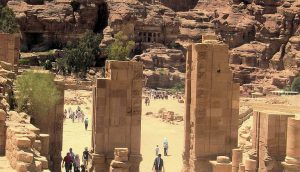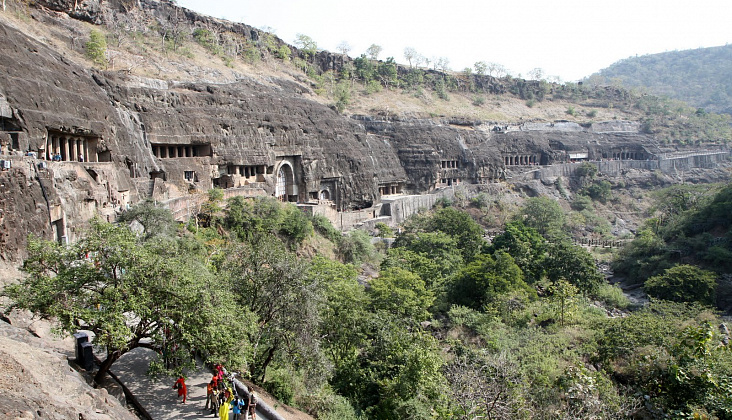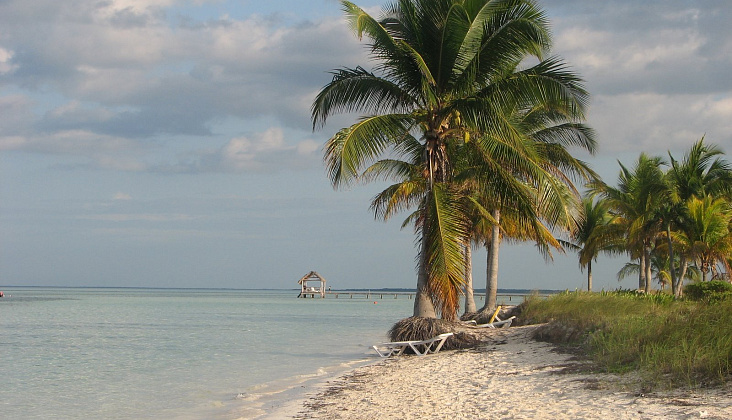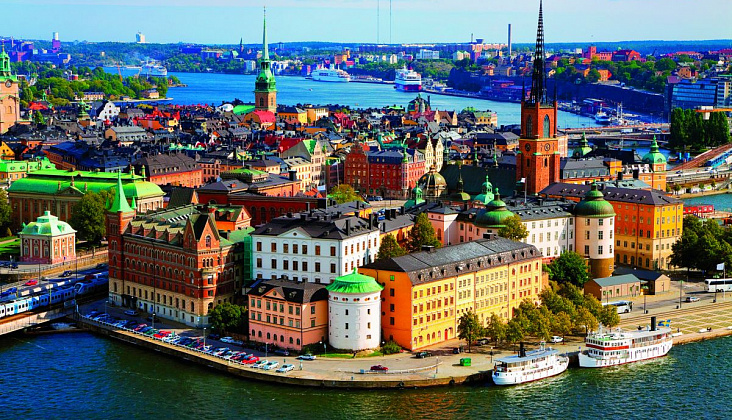Jordan is an Arab country in the Middle East.
 SHOPPING
SHOPPING
From Jordan, you can bring Madaban wicker rugs, bottles of colored sand from Petra (they are best bought in Petra itself), souvenirs from the olive tree, ceramics and copper ware, jewelry, Bedouin jewelry made of black silver and much more. Jordanian cosmetics based on products from the Dead Sea is also very popular.
Unbelievable, but true: the traditional “Eastern” bargaining in Jordan is almost absent. Prices, if they drop, it is not much, and mostly Bedouin boys selling souvenirs in Petra. In shops and shops, sellers behave extremely cautiously and politely, but always with dignity: no one allows himself to grasp the sleeves and other attributes of Middle Eastern malls.
Friday in Jordan – official holiday. Christians own shops may be closed on Sunday. There is no single work schedule for retail outlets: each owner determines the opening hours of his establishment himself. During Ramadan, institutions and shops close earlier than usual.
If the obsession to pick up dirt directly from the shore of the Dead Sea suddenly takes possession of a tourist, you can ask one of the attendants at the coastal hotel to help her in her search on the shore. The service will cost 1-3 JD, depending on the difficulties associated with its provision, and depending on the amount of extracted good. The best dirt has “radically black color”, it can be transported in several plastic bags enclosed in each other.
WHERE TO STAY
The hotel business is well developed and is a rich choice for every taste and wallet. A tourist looking for a quality holiday on the Red Sea will find a good selection of good hotels in Aqaba. The same is at the Dead Sea.
At the same time, a wide choice is also presented to independent public-sector tourists looking for a good and inexpensive accommodation. In every major city in the country dozens of small budget hotels are waiting for their clients.
By the choice of the hotel, however, should be approached carefully. For example, many cheap hotels in the center of Amman do not have hot water, ventilation, and no one guarantees the safety of personal belongings.
The attendants of resort places communicate with tourists mainly in English, and in some hotels Russian-speaking employees have already appeared. True, on the Dead Sea or in Aqaba it will be difficult to find them.
SEA AND BEACHES
The Jordanian coast of the Red Sea is relatively small – only 25 kilometers from the Israeli to the Saudi borders. In Aqaba, most of the comfortable beaches belong to hotels, the rest are generally accessible, and there are always many local residents having a rest. In the northern part of the city, the beaches are nice and sandy, as they move to the south they are rocky, with coral reefs at a short distance from the coast.
The coast of the Dead Sea – here the recreation area and hotels is located in the northern part. There are also equipped beaches at hotels and places for general recreation. The beaches at the hotels are equipped, there are showers, changing rooms. The coast, with the exception of artificially equipped zones, is rocky.
STORY
The remains of Homo erectus, Neanderthals and ancient Homo sapiens were found in the Jordan Valley, Azraq and the south of modern Jordan.
During the Neolithic period (8,500–4,500 BC), agriculture began to develop. Plaster figurines were found in the settlement of Ain Ghazal in the north of Amman.
Coal was melted in Feinan during the period of chalcolith (4 500 – 3 200 BC). Frescoes of this period were found in the village of Telat Al-Ghasul.
During the period of the Bronze Age (3,200-1,200 BC), settlements flourished, along with architecture, tools, art, and trade. During the Late Bronze Age, the territory of Jordan fell under the influence of Egypt.
During the Iron Age (1,200–332 BC.), The territory of Jordan was divided between the kingdoms of the Ammonites, Moabites, and Edomites. This period includes the bulk of the events of the Old Testament. Highly developed agriculture existed in southern Jordan. This period includes a large number of settlements in Amman, Deybana, Madaba, Mount Nebo, Bucera and Karak.
In the ancient period, Jordan is the site of the clashes of the Nabataean civilization with its capital in Petra (about 400 BC – 106 AD), first with the Greek (after the conquests of Alexander the Great, 332-63 BC), and then with Ancient Rome (63 BC. E. – 323 AD. E.).
In 106, most of the territory of modern Jordan became part of the Roman Empire. At this time, the heyday of the city of Philadelphia (Amman), Gerasa (Jerash), Gadara (Um Kais), Pella and Dion (Irbid) are flourishing. The heyday of trade, in the Roman period – the construction of roads.
In the Byzantine period (324-634) trade and agriculture continued to develop. Christian churches are being built, many of them are decorated with mosaics.




